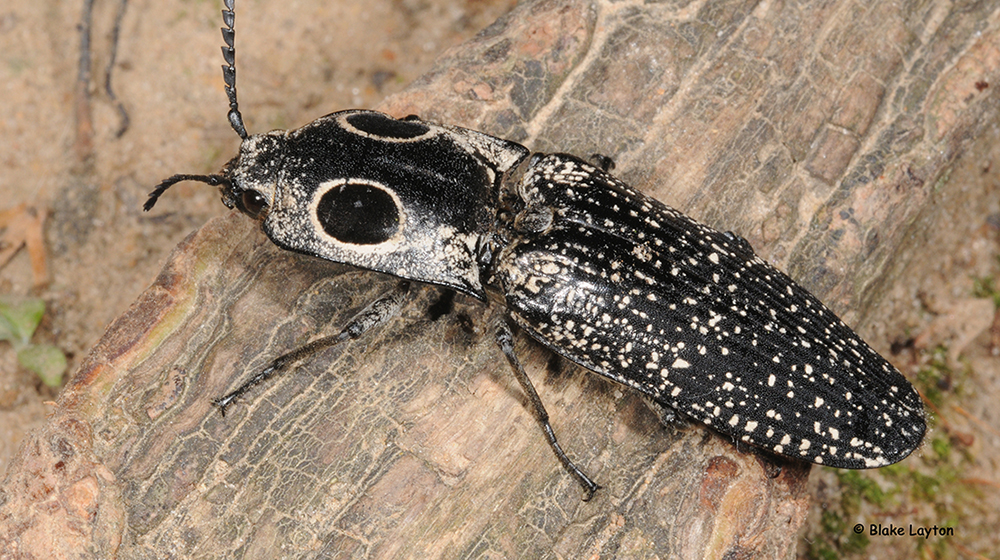Eyed Click Beetle, Vol. 2, No. 29
Related News
May 12, 1997
March 17, 1997

Those are not real eyes; they are just for show. Adult eyed click beetles are not very common, but people tend to notice and remember them when they do see one. At one to two inches in length, these are large insects, and those large false eye spots on the back of the thorax are just so conspicuous. Although some species of click beetles have bioluminescent eye spots, the eye spots of eyed click beetles do not glow in the dark. Eyed click beetles are most often spotted around the outsides of buildings, where they have been attracted to lights—yes they can and do fly. Place an adult beetle on its back and it will usually flip into the air in an often successful attempt to right itself. And, if at first it does not succeed…… This flipping action is accompanied by a relatively loud click, which explains why beetles in this family are called click beetles.
Although they have strong mandibles and can give a sharp bite if not handled carefully, eyed click beetles are neither pests nor beneficials. The larvae occur in decaying logs where they feed on other insects, such as the larvae of Bess beetles and other wood-boring beetles. Even though they are predators, eyed click beetles cannot really be considered to be “beneficial” because the insects they feed on are not really pests.
Elateridae is a large family and many of the other click beetle species are pests. The larvae of click beetles are known as wireworms and many species of wireworms damage plants by feeding on roots and other plant parts. Crops planted into fields that were recently in pasture and/or weeds are especially susceptible to wireworm damage.
Blake Layton, Extension Entomology Specialist, Mississippi State University Extension Service. The information given here is for educational purposes only. Always read and follow current label directions. Specific commercial products are mentioned as examples only and reference to specific products or trade names is made with the understanding that no discrimination is intended to other products that may also be suitable and appropriately labeled.
Sign up to receive Bug's Eye View.